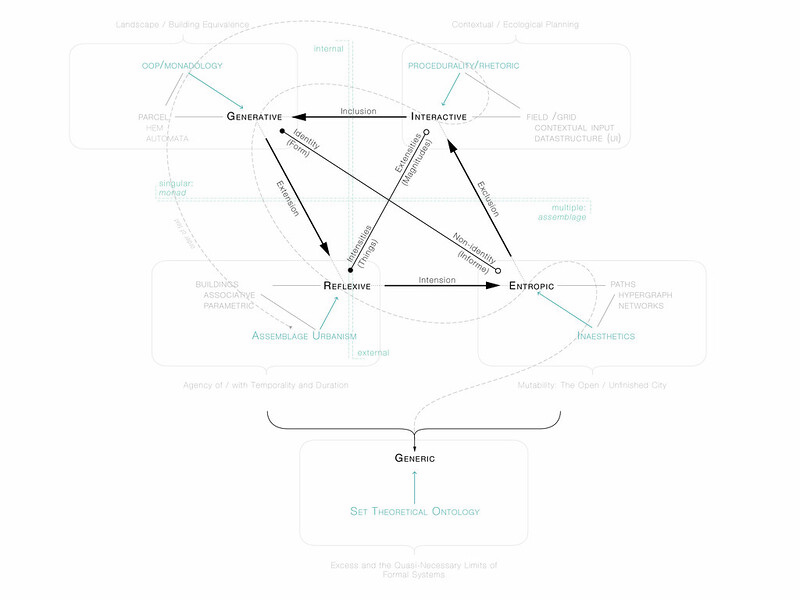Network scientists have discovered how social networks can create the illusion that something is common when it is actually rare.

One of the curious things about social networks is the way that some messages, pictures, or ideas can spread like wildfire while others that seem just as catchy or interesting barely register at all. The content itself cannot be the source of this difference. Instead, there must be some property of the network that changes to allow some ideas to spread but not others.
Today, we get an insight into why this happens thanks to the work of Kristina Lerman and pals at the University of Southern California. These people have discovered an extraordinary illusion associated with social networks which can play tricks on the mind and explain everything from why some ideas become popular quickly to how risky or antisocial behavior can spread so easily.
Network scientists have known about the paradoxical nature of social networks for some time. The most famous example is the friendship paradox: on average your friends will have more friends than you do.
This comes about because the distribution of friends on social networks follows a power law. So while most people will have a small number of friends, a few individuals have huge numbers of friends. And these people skew the average.
Here’s an analogy. If you measure the height of all your male friends. you’ll find that the average is about 170 centimeters. If you are male, on average, your friends will be about the same height as you are. Indeed, the mathematical notion of “average” is a good way to capture the nature of this data.
But imagine that one of your friends was much taller than you—say, one kilometer or 10 kilometers tall. This person would dramatically skew the average, which would make your friends taller than you, on average. In this case, the “average” is a poor way to capture this data set.
Exactly this situation occurs in social networks, and not just for numbers of friends. On average, your coauthors will be cited more often than you, and the people you follow on Twitter will post more frequently than you, and so on.
Now Lerman and co have discovered a related paradox, which they call the majority illusion. This is the phenomenon in which an individual can observe a behavior or attribute in most of his or her friends, even though it is rare in the network as a whole.
They illustrate this illusion with a theoretical example: a set of 14 nodes linked up to form a small world network, just like a real social network (see picture above). They then color three of these nodes and count how many of the remaining nodes link to them in a single step.
Two versions of this setup are shown above. In the left-hand example, the uncolored nodes see more than half of their neighbors as colored. In the right-hand example, this is not true for any of the uncolored nodes.
But here’s the thing: the structure of the network is the same in both cases. The only thing that changes is the nodes that are colored.
This is the majority illusion—the local impression that a specific attribute is common when the global truth is entirely different.
The reason isn’t hard to see. The majority illusion occurs when the most popular nodes are colored. Because these link to the greatest number of other nodes, they skew the view from the ground, as it were. That’s why this illusion is so closely linked to the friendship paradox.
Lerman and co go on to tweak the parameters of the network, by changing the distribution of links and so on, to see how the majority illusion depends on them. It turns out that the conditions under which the illusion can occur are surprisingly broad.
So how prevalent is it in the real world? To find out, Lerman and co study several real-world networks including the coauthorship network of high-energy physicists, the follower graph of the social-media network Digg, and the network representing links between political blogs.
And the majority illusion can occur in all of them. “The effect is largest in the political blogs network, where as many as 60%–70% of nodes will have a majority active neighbours, even when only 20% of the nodes are active,” they say. In other words, the majority illusion can be used to trick the population into believing something that is not true.
That’s interesting work that immediately explains a number of interesting phenomena. For a start, it shows how some content can spread globally while other similar content does not—the key is to start with a small number of well-connected early adopters fooling the rest of the network into thinking it is common.
That might seem harmless when it comes to memes on Reddit or videos on YouTube. But it can have more insidious effects too. “Under some conditions, even a minority opinion can appear to be extremely popular locally,” say Lerman and co. That might explain how extreme views can sometimes spread so easily.
It might also explain the spread of antisocial behavior. Various studies have shown that teenagers consistently overestimate the amount of alcohol and drugs their friends consume. “If heavy drinkers also happen to be more popular, then people examining their friends’ drinking behavior will conclude that, on average, their friends drink more than they do,” say Lermann and co.
In other words, blame the majority illusion.
That’s important, but it is not yet a marketer’s charter. For that, marketers must first be able to identify the popular nodes that can create the majority illusion for the target audience. These influencerati must then be persuaded to adopt the desired behavior or product.
That’s a goal that any good marketer will already have identified. At least now they know how and why it can work.
Ref: arxiv.org/abs/1506.03022 : The Majority Illusion in Social Networks
mrnorwood
Pardon me if I'm a bit underwhelmed by this bit of "science". So people over-attribute social prevalence to traits exhibited by socially influential people (i.e. celebrities of one sort or another)... didn't we all already know this? Isn't this why marketers use celebrities (or mini-celebrities, i.e. "super influencers") to do their endorsements? Isn't this why Jenny McCarthy was able to create an international anti-vaxxer movement? Isn't this why people have body image issues -- because they spend all day looking at pictures of people who are professionally beautiful? Isn't this why kids grow up thinking that they have a pretty good chance of being a professional athlete or actor or singer -- because they spend all day paying attention to the exploits of the handful of such people who exist in the world? Who didn't already know this?
The last sentence in the article seems absurd to me. "People have known for ages that you can use water to make things wet, but now SCIENCE has explained for the first time why that works: it turns out that water has the property of wetness!" Huh?
Chris Boese
OK, I have what is probably a stupid question, not about the network illusion illustrated secondly, which I get.
My question is about the AVERAGE HEIGHT thing, where averaging would make it seem that the majority of your friends are taller than you (or have more friends than you).
Regarding height, why would the tilt of an unbalanced average always be ADDITIVE? TALLER? Isn't there an equal and opposite chance that it could be subtractive? That the majority of your friends are shorter than you? I mean, from a math standpoint (and not a protein in a culture's diet over time standpoint), an average doesn't care if it is off-balanced UP or DOWN. What is it about height that makes it additive in groups, in the straight math?
I can see where friend counts might tick up, just like we all seem to be gaining weight, so calories tick up too, without you knowing it. But height is just a snapshot of a culture, of a group. It is a stable measure. It DOES tick up for children, because they are growing. And to a lesser extent, it even ticks downward, slightly, for the elderly.
Maybe I'm just missing something obvious. I just can't feature how an average would be able to distinguish right from left, up from down, adding from subtracting, to make it tilt toward the additive side of the equation.
If you are ADDING subjects to the averaging pool, that also wouldn't seem to make it tick up consistently. It adds numbers to the total, but the average is still the reductive average, and, like a grade point average, the more items added to the pool DIMINISH the impact of all the other items. That's why one C your second semester freshman year makes your GPA swoon, while only one C, registered near the end of your lazy senior year barely makes your GPA wiggle. (GPAs most surely do not always tick up!)
Valton
@Chris Boese I think that's because, in both cases, one side of the tilt is limited, and the other is not. You cannot have less then 0 friends in a social network. Neither you can have less than 0,000001cm heights (in bizarro world). On the other side, there is no limit. You can have a trillion friends, or be 1km high (again, in bizarro world). When the average number of friends of an individual is, lets say 200, a friend on the lesser extreme will have 199 friends less than you. On the higher extreme, someone will have 999.999.999.9800 (or something like that) firends more than you... so the deviation on the average will be always towards more friends.... because you cant have someone with -1 trillion friends to counterbalance it.
patricjean
I have a question (sorry for my english).
The same illusion exists in the traditional medias where few people are speaking all day long, expressing more or less the same king of opnion.If you watch tv (in France for example) you could think that everybody agrees on many points of view.
Do you think that the illusion is stronger in the traditionnal medias or in the social networks ? And why?
Lizaloop
I'd like to see this diagram expanded into a state sequence similar to the "game of life". We'd need to add a parameter for the probability that a recipient node would share the message. It's clear that, in the initial state, it matters whether the red nodes have many or few connections. But, in the simplified network presented, no red node is directly connected to another red node. You have to get to the second or third state to begin to "go viral". In real social networks influencers are usually connected to each other. They may also be more likely to forward messages. Of course, message transmission phenomena have no relationship to the value or veracity of message content. Clearly more study of this is needed if we are to survive in a social-media permeated world governed democratically by popular public opinion.
Rumplestiltskin
Anything appears to be "common" when the human psyche is continually bombarded with news from every angle and also by an all too eager alternative press to reference each other by the hundreds, so that we hear of something over and over. Our senses tell us that it must be "common" because we hear of it all the time in the numbers, regardless of the truth.
This is precisely what Joseph Goebbles used in his propaganda machine, believing that if a lie is told often enough and thoroughly enough, it will be believed as fact. How else could a small nation managed to whip up its citizenship to accept genocide as the only alternative method of righting their society after the banking cabal's wrecking of its economy.
Lies told often enough begin to seen as truth, thus common. Now that the scientist have figured out how easy it is to manipulate us, the manipulators of our society will have a field day pushing their agenda, because our human brains want to believe, as it is part of our tribal safety mechanism. Thus we believe whatever we are told, and even more so when we are told the same thing hundreds of times a day.
I know we have enough laws, but seriously, there should be a law against using language to manipulate and obfuscate truth.
Warren Whitlock
I've always said that reality is just the most popular illusion. In that past, this applied to social groups of geographical areas, but as our ability to connect expands, so does our illusion that what we see is all there is.
Fortunatly, more connects mean an increase in the likelihood that we see evidence that our illusion is not reality.
zacernst
The reason why an average person's friends have more friends on average than they do has nothing whatsoever to do with a power law. It's because people with more friends than average are more likely to be your friends. That's all.




